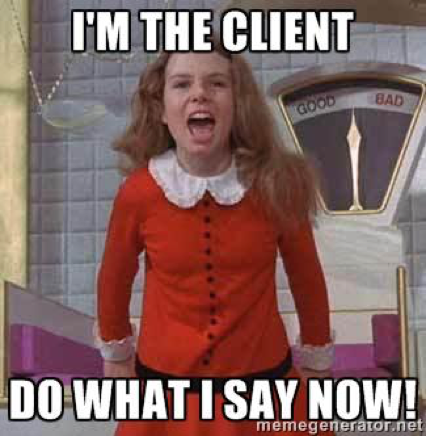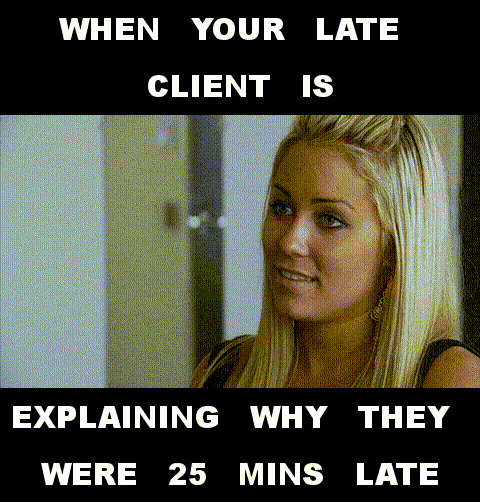They Ask, You Answer (TAYA) is a powerful marketing and business framework that we’ve seen have an enormous impact on businesses across various industries and of different sizes. Hiring a coach to walk you through the setup and ongoing implementation and optimisation of TAYA is key in finding success. However, despite the amazing experiences that come from working with a TAYA Coach, sometimes things can and do wrong. In this article, we’re going to be covering four mistakes that TAYA coaches can sometimes make.
It’s important to understand the mistakes that TAYA Coaches are prone to making so that these can be avoided when working with a coach.
The four mistakes that TAYA Coaches can make are:
These mistakes can hinder, stall or flat-out ruin your ability to succeed with the TAYA framework. To ensure you avoid these mistakes and find success, in this article we’ll look at these four mistakes and how to avoid them.
Mistake #1: Not getting sufficient client buy in
One of the most important parts of TAYA is leadership buy-in. If a client is not at least committed to the principle of being the most dominant player in the space by transparently and authentically answering buyer questions on their website and training the sales team to better leverage technology and content, TAYA will fail.
When a client doesn’t have leadership buy-in, they’re going to experience pushback with TAYA internally. This is going to result in a bunch of issues that ultimately will lead to the failure of TAYA.
Some of these issues include:
- The sales team not wanting to engage or participate in content discussions
- The CEO not allowing the team to make key hires, such as a content manager or videographer
- Staff refusing to participate as subject matter experts
Since these are all key to implementing TAYA, without them you’re going to ultimately fail. That’s why getting leadership buy-in is extremely important.
From a coach’s position, it is more difficult to get leadership buy-in from an organisation when they’re not a part of that organisation in the first place. On top of this, coaches may not be able to accurately identify if there is complete leadership buy-in.
If the coach is not able to identify this or it becomes near impossible to generate buy-in, TAYA simply won’t work. This is probably the biggest and most common mistake a TAYA Coach can make.
How to avoid this mistake
The best way to avoid this mistake is to hold a They Ask, You Answer workshop for your client with all the decision-makers in your client’s company.
The purpose of these workshops are to:
- Get everyone bought into the vision of TAYA
- Get alignment between the sales and marketing teams by forming a revenue team
- Start the process of content ideation and walk away with content ideas that will generate sales
As a coach, this is a crucial step to avoiding the mistake of not getting sufficient buy in. You can find out more about TAYA Workshops here.
Mistake #2: Not telling clients where they’re going wrong
Another big mistake that coaches make is not telling clients where they’re going wrong. As a coach, it’s important to communicate with a client when they’re about to make a critical error or a bad decision that will ultimately impact their ability to successfully implement TAYA.
However, some coaches find it difficult to tell clients when they’re wrong because they’re afraid of offending the client or they’re just too timid.
The thing is, it’s essential to get this right, because it’s one of the main reasons clients hire a coach in the first place. If you’re not going to challenge your client, then it defeats the purpose of becoming a coach in the first place.
As a result, your clients will never be able to make the best choices when implementing TAYA, and their results will always be subpar.
How to avoid this mistake
Ultimately, the only way to avoid this mistake is to not do it. You need to be fearless and communicate clearly to your clients when and where they’re going wrong.
If you have trouble with this, you can try the following:
Change your perception from seeing your advice as a challenge to the client, and instead view it as a necessary lifeline that will help them achieve success. If you don’t give them that insight, they will fail – this is the mindset you need to quell the fear and be more straightforward with your client.
Mistake #3: Negotiating the standards of TAYA

When working with a client, it’s too easy to try to negotiate the standards in order to make the client happy. However, when it comes to TAYA, there are certain standards that should never be up for debate.
TAYA is a proven framework and every aspect is important to ensuring that the program is a success. Foregoing any of these aspects of TAYA is a mistake.
And one of the biggest mistakes a coach makes is agreeing with their client when they push back on them or refuse to do as instructed. As a TAYA Coach, you must stand your ground.
One common example of something clients push back on is hiring a full-time, in-house content manager who is producing at least three blog articles per week. Clients might argue:
- We can outsource the content for half the price!
- We don’t need to hire someone in a full-time position to write three blog articles per week
In this example, it’s absolutely essential that a content manager is hired in-house as opposed to being outsourced. When you outsource your content with TAYA, you’re not getting the best result possible. Here’s an article where we discuss why you should hire marketing in house as opposed to outsourcing.
If a coach lets the client win here, then TAYA will not be successful, and both parties ultimately lose.
Here at RedPandas, we remain strict with certain fundamental principles of TAYA in order to get the best results. If a client doesn’t want to follow these principles, then perhaps we’re not a right fit, because we know we won’t achieve success and it’ll be a waste of time and money.
How to avoid this mistake
As the client, it’s important that you’re the one to guide the client on what’s working, what’s not working, and how to move forward. If you let your client take the reigns, they’ll ultimately negotiate the standards of TAYA and you’ll be in a difficult position.
The key is to always – no matter what – stand strong. It’s certainly easier said than done. However, to truly avoid this mistake, a coach needs to stay strong in their message to the client, regardless of the pushback they may receive.
One very important tip is not only is it important to stand strong but also communicate articulately why certain elements of TAYA like writing three articles per week, cannot be compromised.
This requires education on the part of the coach and the right communication skills for deliverance.
Mistake #4: Failing to gain your footing as an authoritative peer

The biggest difference between hiring an agency to do the work for you versus hiring an agency to coach you to do it yourself is that a coach will advise, which means it’s all up to the business leaders that are being coached to implement that advice – or not.
Typically, an agency will do the work for the client, deliver it, and that’ll be it. However, when a coach is providing insight, direction and strategy, they ultimately have less control of the final outcome.
If the coach hasn’t gained the respect of the business’ leadership, then they’re not going to listen to the coach’s advice. Ultimately, the coach knows best when it comes to TAYA. Having a client ignore the coach’s direction will ultimately result in failure.
However, the responsibility here resides with the coach. It is the coach’s responsibility to gain the respect of their client’s leadership. Not being seen as an authoritative peer by the client is one of the biggest mistakes a coach can make because it ultimately hinders TAYA from succeeding.
How to avoid this mistake
Sometimes time impacts our level of authority. Over time, you develop a relationship with the client, and as a coach, it becomes harder to remain and to be perceived as authoritative.
As you develop a relationship with the client, it becomes easier for the client to disrespect you.
“Oh, I’m running 10 minutes late to a meeting! John will understand”.
The thing is, if you want to command respect, whether or not you build a friendly relationship with your client is irrelevant. The reason respect is lost and clients stop seeing you as an authoritative peer is ultimately because your behaviour with the client changes.
When they’re running 10 minutes late to that meeting, you let it slide. “Melanie’s usually early, so it’s okay this time”.
The problem is, the client will continue (perhaps subconsciously) to push the boundaries, and as a coach, you will lose your respect and your authority.
In the above example, the best thing to do would be to email or message Melanie and reschedule the meeting for a time when she can make it at the correct time.
To be a great coach, it’s important to hold strong frame and continue to remain authoritative with your clients regardless of how close you may be with them.
So, what’s next?
If you’ve read this far, you’re probably interested in learning more about how TAYA can help your business increase traffic, leads and sales.
If this is you, here’s some articles you might worth a read:












